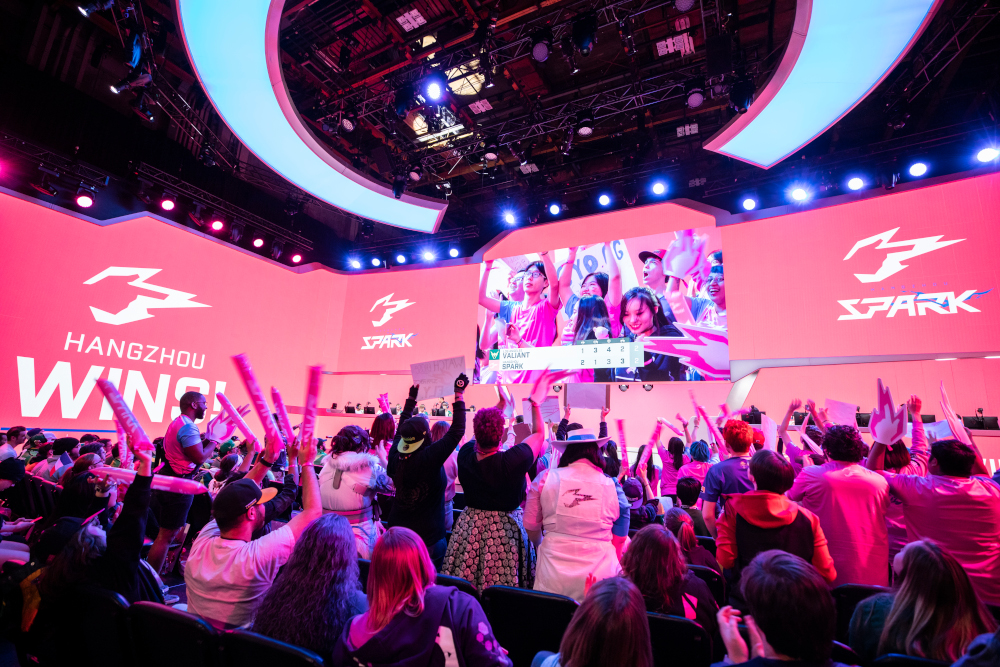After years of being touted as the next big thing in display technology, 4K is finally having its moment. Thanks to plummeting prices, 4K displays at long last have found a foothold in the consumer market. A recent study by Futuresource Consulting found that as many as 227 million 4K TV units were sold worldwide as of 2018, with an estimated 42 million in North America alone. As the consumer market trends toward wider 4K adoption, more and more 4K displays, along with 4K-capable infrastructure, are being installed in commercial applications. And, as if 4K wasn’t pushing the resolution race far enough, 8K consumer displays are hitting stores just as the commercial market begins to dip its toes into the 8K waters.
However, one of the largest hurdles to widespread adoption of 4K and 8K displays has yet to be overcome—the lack of native 4K and 8K content out there. Although some of the major streaming services like Netflix and Amazon Prime Video have begun offering 4K content, the vast majority of video content—especially live content—is not being produced in 4K. And native 8K content is practically nonexistent (tech demos and NHK’s 8K broadcasts in Japan notwithstanding).
The State Of 4K/8K Gaming
But another area of consumer technology is making headway in the push for 4K and 8K content: video games. Sony and Microsoft’s first 4K-compatible gaming consoles, the PlayStation 4 Pro (released November 2016) and X Box One X (released November 2017), have already been on the market for a couple of years. (In addition to serving as home gaming platforms, both consoles can be used to stream 4K content from streaming services.) And both Sony and Microsoft made big news earlier this year with announcements that their next-generation consoles, the PlayStation 5 and X-Box “Project Scarlett,” set for release in 2020, will be “8K-compatible.” Likewise, video card manufacturers like NVIDIA have been releasing 4K-compatible products for a few years now, and there are even some bleeding-edge PCs on the market today that can deliver an 8K gaming experience (assuming you can afford the technology).
Although video game consoles and gaming PCs are consumer products, they have an impact on commercial AV installations thanks to the rising popularity of esports. Because of the ascendance of esports into the cultural mainstream, purpose-built esports venues are being constructed around the globe. What’s more, hospitality venues are beginning to cater to the esports fandom. And some education facilities are even investing in esports as part of their athletic programs in an effort to attract students. It would therefore seem safe to assume that the majority of esports-oriented installations going forward should include 4K—or even 8K—displays in order to remain sufficiently futureproof.
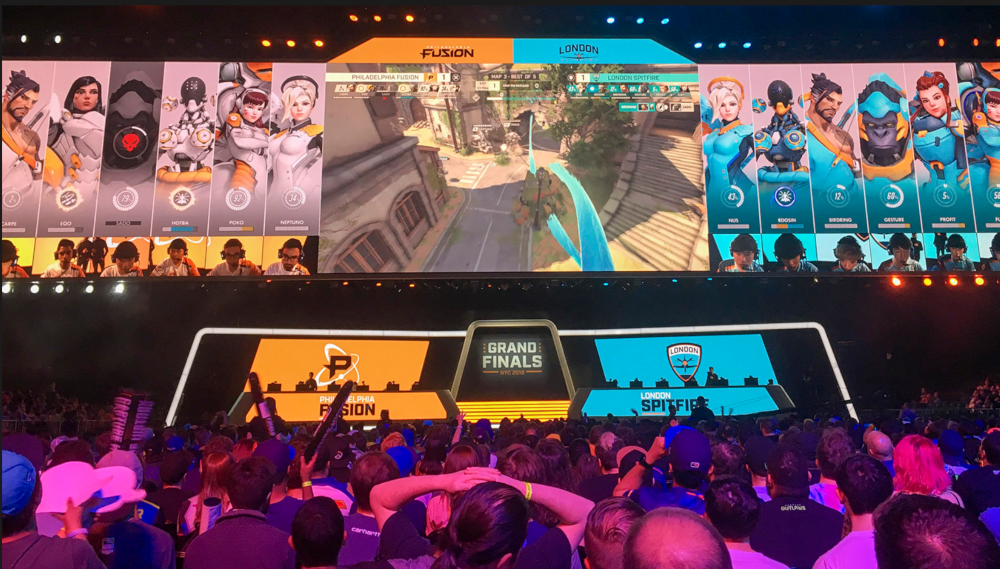
But is the market developed enough to justify the associated cost of 4K and 8K displays (as well as the infrastructure required to support video transmission at those resolutions)? Not necessarily. To be fair, the vast majority of video games available today do not feature native 4K content. Although it is touted as 4K-compatible, the PlayStation 4 Pro actually uses “checkerboard rendering” to push games to 4K resolution. The X Box One X likewise relies on checkerboard rendering for the majority of its 4K content delivery, although it does support native 4K, and some games can be played on the platform in native 4K resolution (such as the esports favorites “Rocket League” and “Overwatch,” both of which can run on the X Box One X in native 4K at 60fps). And there is rampant skepticism among gamers regarding the next-generation consoles’ ability to deliver true 8K content, as well as the viability of 8K gaming on PC, despite the promises of manufacturers.
All told, it seems like there is still plenty of uncertainty about the current and future state of 4K and 8K gaming, and therefore plenty of uncertainty regarding the display needs for esports applications going forward. Is there enough 4K video game content already out there to justify the widespread adoption of 4K displays? Has 4K become ubiquitous enough in the consumer market that anything less than 4K in commercial esports applications is unacceptable? Do 4K and 8K resolutions even matter to esports competitors and their audiences?
For insight into these issues and more, Sound & Communications reached out to AV design consultant Idibri, AV integrator Alpha Video, AV distributor Starin, and display manufacturers Samsung and LG for their perspectives.
Impact Of Consumer Trends
All parties seemed to agree that the increased adoption of 4K displays in the consumer market is impacting expectations for video applications in the commercial market, although they cautioned against integrators and system designers getting caught up in a video arms race instead of catering specifically to a client’s needs.
“As it relates specifically to display technology, in my personal opinion, that’s a technology that’s more consumer-driven,” Jeff Volk, VP of Alpha Video, said. “As things come to mass on the consumer market, it drives down price points. So, if manufacturers start producing a bunch of 4K panels, they can add a handful of feature sets that are required for the commercial market and provide those panels at a lower price point. So, mass production, or larger production runs, create lower price points, which drive adoption.” He added, “I think it’s also just natural. Whether you’re a CEO or a media manager or just a rank-and-file employee at a company, if I’m watching Netflix in 4K HDR on my home TV, and then I go to my office and I see something that’s lower resolution and doesn’t look as good in my lobby, I’m probably disappointed with that experience. And so I think, absolutely, on the display technology side, that the consumer end of the market is really what wags the tail of the commercial market—not the other way around. I think there are plenty of other technologies where that’s inversed, but, as it relates specifically to displays, I think consumer adoption tends to drive commercial adoption.”
Garry Wicka, VP of Marketing for LG Business Solutions, LG Electronics USA’s business-to-business division, added, “Consumers expect the technology in public spaces to be just as good as, or better than, what they have at home. 4K ultra-HD TVs now account for the majority of TVs sold on the consumer market and represent the fastest-growing segment of the hotel TV market. Sports bars have been quickly upgrading to 4K, too.”
“As more and more 4K and 8K content is continuing to be developed, you will see a transition to permanent installations, driving more people out of the home to these esports arenas, casinos and theaters that are hosting these tournaments,” John Shim, Senior Engineering Manager, Samsung Electronics of America, said.
Joe Dunbar, Starin’s Technical Experience Champion—Visualization, emphasized that the best approach is not to allow consumer trends and expectations to dictate system design, but rather, as always, to focus on tailoring the solution to the client’s needs. “The [consumer and commercial] segments certainly have some similarities, but for the most part, I don’t think one leads or follows the other. It’s all about needs, which means, for us in the industry, it’s all about qualification of needs. We exist to make complex technology work for the end user,” he said. “Our job isn’t to sell end users the highest specs and latest and greatest, it’s to facilitate technical solutions that solve problems—and provide and/or enhance experiences. Our duty doesn’t change based on the variables, but the technology definitely can.”
Dunbar’s point about designing each system for the needs of the client is well taken, and some important questions need to be asked: In the grand scheme of video-based concerns, are higher resolutions a priority for gamers? As it relates specifically to esports applications, do the benefits of higher-resolution video outweigh the costs of transmitting that content? And in the world of esports competitions, are the needs of the players the same as the needs of the live audience?
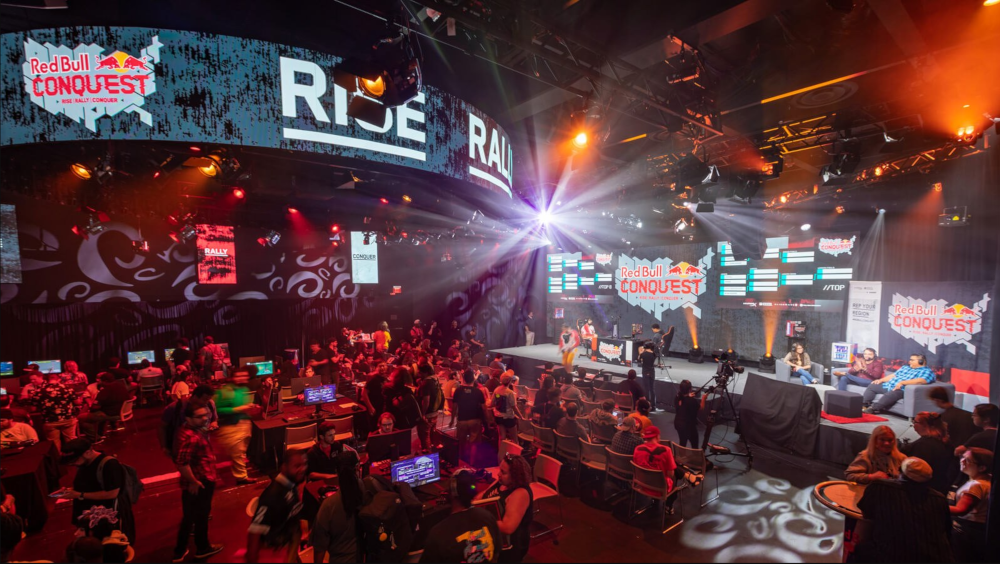
Understanding Needs
First of all, it is important to understand that the various parties involved in an esports competition will be interfacing with different aspects of the system. During competition, players will be playing the games at their own personal gaming stations, and as such, they will be focusing on their own individual monitors. The live audience will most likely be watching the action on large-format videowalls (typically made up of indoor LED panels) and supplemental screens located throughout the venue. There will also be judges or referees involved, who might be watching the action on their own monitors. And there might also be play-by-play and color commentators (known as “shoutcasters”) calling the action from their own dedicated screens.
Obviously, it is of paramount importance to give the players and referees the most optimal video technology available because video quality can have a tangible impact on gameplay, especially at the professional level. But it is also important to ensure that the other parties have an optimal viewing experience, as well. However, all of our respondents cautioned against a one-size-fits-all approach of ensuring all displays installed in an esports venue meet a certain threshold in terms of specs.
When it comes to drawing distinctions between the displays viewed by the players and officials as opposed to the displays viewed by the audience, Volk suggested that a lot of the gaming-specific applications can be served by consumer-grade displays, because these displays can deliver the specifications gamers expect (which might or might not include 4K or 8K resolution) at a manageable price point, whereas more expensive large-scale commercial displays should be used to serve the viewing audience.
“[The applications we use consumer displays for include] all of the gaming-specific things,” Volk explained. “So, it’s the actual gaming pods, or gaming stations, that would be a part of a competition stage. In a team training facility, for example, you’re going to have sim rooms where they’re going to be practicing and playing, and so all of those gaming stations get [consumer-grade displays]. In a competition environment, you’re going to have an observer room, which is essentially just an extension of the gameplay, so we’re going to have [displays with] high refresh rates there. Shoutcasting displays, those will typically be those consumer-oriented displays, because we’re trying to replicate exactly what the gamers are seeing on their workstations for those individuals. The other displays that are typically commercial displays are [used for] what you would consider the traditional AV functions that wrap around the actual gameplay. So, it might be indoor LED behind the competition stage. It may be flatpanels in a conference room. In team facilities, a lot of them have film rooms like you would expect to see in an NFL facility where they actually go back and look at footage. That is where we tend to typically put more commercial displays, because they’re more traditional AV applications.”
Ben Cating, Senior Consultant—VP for Idibri, echoed the idea that consumer-grade displays can be used for a lot of gaming-centric applications in esports venues to lower costs so that budget can be spent elsewhere. “Cost is still a driver, as is the actual experience,” he explained. “At a certain distance, most people will not be able to tell the difference in a 1080p versus 4K display. With in-venue clubs, we can scatter many more displays throughout the venue at a lower cost, and the experience is largely the same. We would rather spend the money on a more solid transmission path that allows the venue owner to manage the content and monetize the revenue from what is being displayed.” Regarding the audience-facing displays, Cating explained, “Visual acuity, seating angles, resolution and possible raster to support not just the primary video, but statistics, advertising and other ancillary data [are] important to enhance the fan experience.”
According to Dunbar, “The most important thing to consider is the needs and the variables. The technology is simply a tool to help provide an experience. Resolution is important, but only in the context of the viewer. High resolution can easily be negated by viewing distance. I think a lot of people would be surprised how coarse the pixel pitches are on the direct-view LED scoreboards for their pro sports teams, because viewing distance matters. For the venues specifically, I think it’s all about choosing what provides the experience they’re looking for, for their users and patrons alike.”
Dunbar continued, “When selecting displays for the players, it’s really the whole package that needs to be considered, in terms of the display’s specifications—refresh rate, color space, resolution, size, all of it. One other thing to consider is that venues are looking to maximize their investment and provide the best experience for their competitors and spectators. Warranty terms and support chains shouldn’t be ignored, either. It seems there is a new ‘manufacturer’ every day for these types of solutions who is hyping up the highest numbers and specifications. But it’s not about who looks best on paper—it’s about leveraging the right technology. This is why the design stage is so critical. It’s specifically why my role at Starin exists; it’s literally my job, and I’m sure it’s only a matter of time until we see more consultants and integrators add this skill set to their portfolio as a specialty focus.”
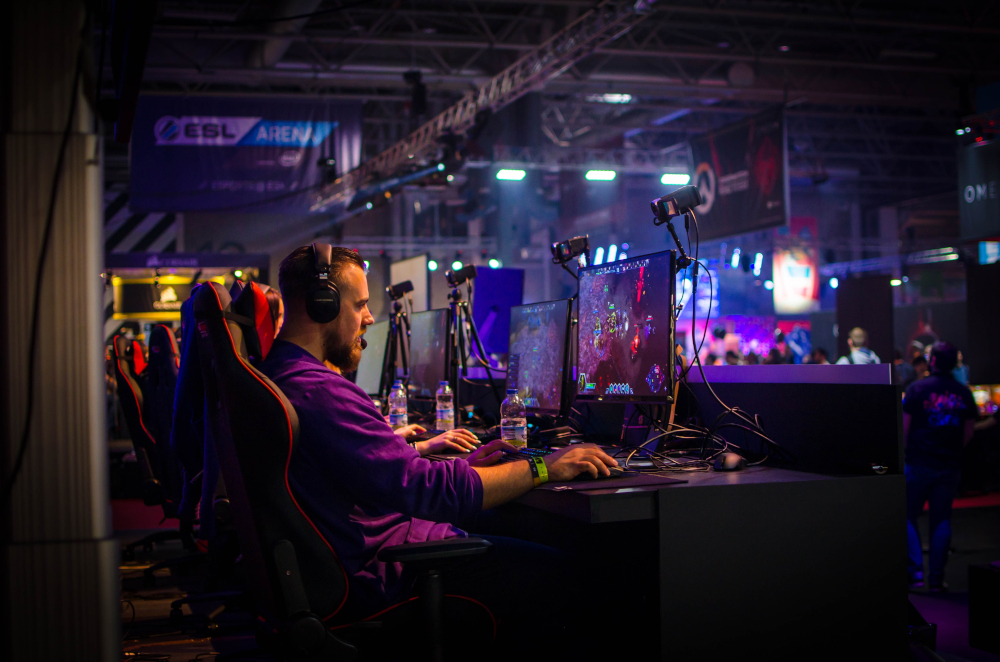
Does 4K/8K Matter To Gamers?
So how does 4K and 8K resolution factor into the experience that gamers and audiences demand from an esports venue? All of our respondents agreed that higher resolutions aren’t a high priority for gaming applications, but there is one thing that tops the list of display concerns for gamers: high refresh rates. (If you’ve ever browsed any gaming discussion forums, with their endless back and forth about frame rates and refresh rates, this should come as no surprise. For many gamers, there is nothing worse than gaming at less than 60fps, so a display’s refresh rate has to keep pace. And frame rates of 144 and higher are increasingly in vogue.) The respondents also pointed to some other factors that are important to consider when choosing displays for esports venues, but refresh rates were top of mind.
According to Wicka, “Resolution isn’t the number-one factor for players. In fact, it’s refresh technology that players look for. Smooth gameplay, and reducing input lag and screen tearing are the most important factors for them. You may hear the term ‘ghosting,’ as well. Essentially, ghosting is where the colors become distorted and images are blurred, giving them a smearing effect. As objects move on the screen, they leave behind a bit of the image of their last position, like a shadow. If the players can’t make out their surroundings, then game over. So, gamers tend to choose monitors that are G-Sync-compatible with high refresh rate and low response time in order to prevent these issues.”
Cating added, “Higher refresh rates on 1080p monitors are much more advantageous versus 4K. High frame rate plays a huge role in the equation, as does the application for the gamer or spectator.”
“Refresh rates are an important specification in the esports world,” Dunbar offered. “I think color space and luminance specifications are both important, and sometimes overlooked, specifications. A washed-out image, crushed black levels or bad color reproduction can be the difference between seeing or being seen first, and in shooter-type games specifically, that can have significant impact.”
Volk also pointed to refresh rate as the deciding factor. “I can give somebody a giant monitor that’s 4K,” he said, “but if it has poor refresh rates and poor response time, hardcore, pro-level gamers are going to throw that out in minutes as unacceptable.”
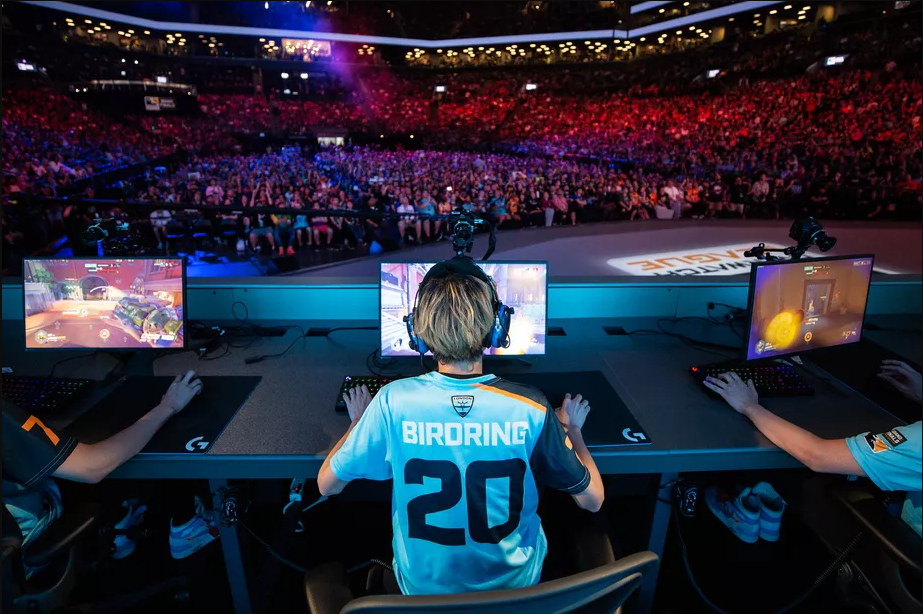
What To Install?
So, if 4K displays aren’t yet essential for gaming applications despite the existence of 4K gaming platforms and 4K content, what should we make of the impending release of 8K-compatible consoles in the near future? Will those consoles really feature true 8K resolution? If they do, will an esports installation not be sufficiently futureproof if it doesn’t feature 8K displays and 8K-capable infrastructure? Are some esports venues already installing 8K displays to get ahead of the curve? Will 4K or 1080p displays be “good enough” until 8K increases its foothold in the consumer market?
For the most part, our respondents agreed that it is still too soon to go all-in on 4K, let alone 8K, but the tide does seem to be turning. For now, the choice of display still comes down to the application. For gaming-oriented applications, like the player stations themselves, it might be prudent to invest in (primarily consumer-grade) 4K or 8K displays, budget permitting. For audience-facing applications, the favorite solutions seem to be direct-view indoor LED. Many of these LED videowalls are built to custom resolutions, which might or might not be 4K-compatible, whereas large-format 8K videowalls are still in the early-adopter phase, making them an impractical and expensive option.
In addition to practicality and cost, Volk also pointed to venue size as a barrier to adoption of large-scale 4K videowalls in esports applications. “I think if you think of most esports venues, they’re far more intimate,” he said. “Most of what is fan-facing has transitioned to indoor-LED-type displays, and so that just becomes a math equation of size versus pixel density to match a resolution that you want. And to get a 4K display with like 0.9mm indoor LED—that’s a pretty massive display. So, I am limited by size. I can’t put in a gigantic 4K-native indoor LED screen as a backdrop. Never mind that people [who] are sitting 50 feet away from it or 75 feet away from it will just be blown out. And, oftentimes, the displays that are being designed as backdrops of esports venues from a competition stage perspective aren’t a native resolution anyway. So, 4K has not been a topic of discussion for any of the facilities we’ve been involved in to date—largely because of size, and also because of budget.”
According to Dunbar, “I think we have reached a point where most installations should at least support 4K within the distribution and infrastructure. Whether or not all the endpoints utilize 4K content and displays depends on a lot of variables. For example, in an esports application, it’s recommended to provide the gamers with the 4K experience, but other screens throughout the venue can still serve their purpose with 1080p due to viewing distance. Either way, the infrastructure and distribution need to support 4K content.”
Regarding the impending release of 8K-compatible consoles, Dunbar said, “I think we’ll need to see what ‘8K-compatible’ means before we can judge whether or not they will have a significant impact right away. It’s too new, it’s too expensive and it’s too unique. We saw this with ‘HD-ready’ and ‘4K-ready’ equipment, and it’s a trademark of very young technology that has the capability of achieving a certain specification but usually comes with some kind of caveat.” He added, “We’re past the ‘chasm’ of 4K technology, but I don’t think that means we can look past 4K displays. There are a ton of advances happening in the transmission technology and capability, but just stop and think about the technology required in these places just to move the 4K video around with no latency, with 8-bit and sometimes 10-bit color. Now imagine that for 8K. The bandwidth required for an ultra-HD 4K video at 60fps with 10-bit color and 4:4:4 sub-sampling is almost 18Gb/s. An 8K video with the same specifications requires nearly 72Gb/s! Personally, I feel like users would have a better experience at 4K with 10-bit 4:2:0 color than 8K with 8-bit 4:4:4 color.”
Volk was also skeptical that we’re on the verge of a watershed moment for 8K adoption. “We do a lot of broadcast television work, we do tons of traditional stick-and-ball sports stadium and venue work, and now we’re doing a fair amount of esports work, and I would say that 8K isn’t a part of the conversation in any of those marketplaces today,” he shared. “4K adoption, from a native-production perspective, has been very, very slow to evolve. And so, a majority of in-venue stadium production facilities and television production facilities are not even 4K. So, the idea that there is going to be this mass migration to 8K when the market has been lagging substantially behind in even 4K production is hard for me to predict. On the gaming-centric pieces of this, as 8K-capable consoles come out and 8K-capable titles are published, that will push consumer display technology, I think, before it will push commercial display technology.”
Volk also added that 4K infrastructure is much more important now than the displays themselves because the displays are actually one of the cheapest parts of a system to replace, especially if the consumer market continues to drive down prices. “As we build AV systems today, if you build them with an infrastructure that’s not capable of handling 4K or higher resolutions, you’re largely doing your client a disservice,” he said. “The user experience piece of it—the display—[is] one of the more reasonably inexpensive pieces to change out as technology advances, provided that you’ve designed and built an adequate core.”
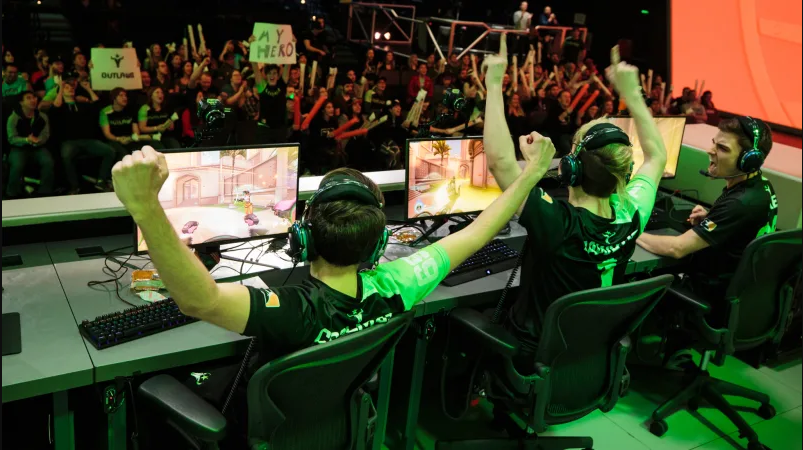
Although the respondents agreed that 4K isn’t yet essential for most gaming purposes, there was a surprising bit of consensus on an up-and-coming market for 4K and 8K adoption that has the potential for esports applications: higher education. As previously mentioned, many schools are looking to add esports to their athletic programs and are investing in purpose-built facilities, and some education institutions are already installing 4K- and 8K-compatible commercial displays.
Dunbar recounted one such recent installation. “We recently partnered with Barco and New Era Technology to help provide a 3×3 Barco videowall at the University of Harrisburg for their school-sanctioned esports team, the Storm,” he described. “This system utilizes 10Gb SDVoE video transmission for the best possible image quality and zero-frame latency. This is also a great example of how mixed resolutions are still very relevant in this space. The Barco LCD videowall panels (like most manufacturers) are 1080p resolution. Send 4K source to four of the displays at their native 1080p resolution, and what are you looking at? A 110-inch 4K display.”
The higher-education market is firmly on LG’s radar, as well. “Another area where we are seeing some traction is in colleges and universities,” Wicka said. “Several institutions have dedicated esports teams, and they are thinking about arenas for their students to compete in. LG can help with a multitude of product categories: gaming monitors, large-format displays, videowalls and even Direct-View LED displays.”
Cating likewise pointed to a recent installation of an 8K display at a higher-education facility, and he jokingly suggested that it would be perfect for gaming purposes. “Our latest installation of an 8K display was for higher education,” he said, “and, admittedly, if I were a student [there], I would find a way to play host to some late-night gaming sessions.”
